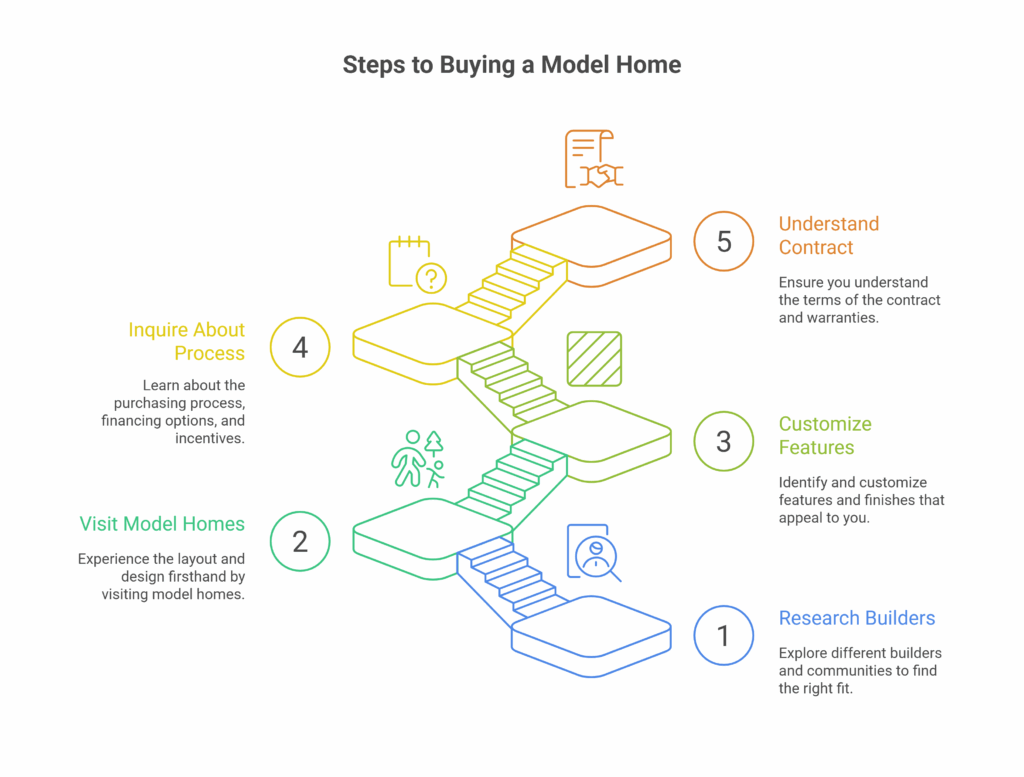Quick Answer: How to Buy a Model Home?
How to Buy a Model Home? Buying a model home can be a smart way to get a beautifully upgraded property at a competitive price. These homes are often showcase properties that builders use to impress buyers, so they come with high-end finishes, landscaping, and carefully chosen designs. To start, research local builders and ask if their model homes are for sale—many put them on the market once a community nears completion.
Make sure to schedule an inspection, as even though the home looks perfect, it’s had heavy foot traffic from tours. Also, clarify what’s included—sometimes furniture and décor can be negotiated. With the right approach, understanding How to Buy a Model Home? can land you a stylish property with added value.
Now let’s dive deeper.

What Is a Model Home?
A model home is a showcase property used by builders to display the design, layout, and features of homes available in a new development. These homes are professionally staged and include premium features such as upgraded countertops, appliances, lighting, flooring, and landscaping. Once the development nears completion or sales slow down, builders often sell these model homes to prospective buyers.
Why Consider Buying a Model Home?
There are several reasons why purchasing a model home can be an excellent choice:
- High-End Upgrades: Builders typically use top-of-the-line materials and features to impress potential buyers.
- Professionally Designed Interiors: Many model homes are staged by interior designers, giving them a polished, move-in-ready look.
- Great Locations in the Community: Model homes are usually situated near the entrance of the development or by amenities, offering convenience and visibility.
- Potential for Better Pricing: As the community nears completion, builders may be more willing to negotiate on price, especially if they need to sell the last few homes quickly.
Step 1: Research the Builder and Community
Before expressing interest in a model home, research the builder’s reputation, quality of construction, and customer reviews. Visit the builder’s website, look up third-party reviews, and drive through the neighborhood to get a sense of community aesthetics and livability.
Also, ask the sales agent how long the model home has been in use. Homes used for a long time may have minor wear and tear, while those used briefly might be in nearly new condition.
Step 2: Understand What Comes With the Home
Model homes are often packed with premium finishes and luxury furnishings—but not all of that may be included in the sale. Some builders sell the model home as-is, fully furnished and decorated, while others remove the furniture and sell it as a vacant home. Always ask for a list of included features and furnishings in writing to avoid surprises later.
Be sure to ask about:
- Appliances
- Window treatments
- Light fixtures
- Built-in shelving or cabinetry
- Outdoor landscaping or structures
- Furniture and décor items (if any)
Step 3: Get a Home Inspection
Even though a model home is newly built (or relatively new), it’s crucial to get a professional home inspection. These homes may have been toured by hundreds of people and used for years as offices, sales centers, or walkthrough demos. A thorough inspection can uncover any issues such as:
- Minor wear and tear from foot traffic
- Possible code violations or unpermitted modifications
- HVAC or plumbing systems not being tested regularly
Treat it like any home purchase—due diligence is key.
Step 4: Secure Financing Early
Just like with any home purchase, you’ll need to line up financing early. Because model homes often include extras, they may be priced higher than other homes in the development. Lenders will appraise the property to ensure it justifies the cost, so be prepared to negotiate with the builder if the appraisal comes in lower than the asking price.
Working with a lender who understands new construction financing and is familiar with model home purchases can make the process smoother.
Step 5: Negotiate with the Builder
Builders are often motivated sellers when it comes to offloading model homes, especially if the development is wrapping up. This puts buyers in a strong negotiating position. In addition to the sale price, consider negotiating:
- Closing costs or incentives
- Furniture and décor inclusion
- Extended warranties
- Minor repairs or upgrades
Remember, the longer a model home has been on the market, the more leverage you might have as a buyer.
Step 6: Review HOA Rules and Community Guidelines
Model homes are often located in planned communities with Homeowners Associations (HOAs). Make sure you review the HOA documents, including fees, restrictions, and amenities. Understand what’s allowed in terms of exterior modifications, parking, landscaping, and use of community facilities.
Step 7: Close the Deal and Move In
Once financing, inspection, and negotiations are complete, it’s time to close the deal. Model homes are typically move-in ready, so you may be able to settle in within days or weeks of closing. Make sure to walk through the home again before closing to confirm that everything agreed upon is still intact.
Final Thoughts
Buying a model home can be a smart move if you’re looking for a home that’s beautifully finished, conveniently located, and potentially a good deal. With proper research, negotiation, and professional guidance, you can turn that stunning showroom home into your personal residence.
And if you need to sell your current property quickly to fund your new home, we’re here to help. Whether you’re upgrading, relocating, or downsizing, we specialize in helping homeowners sell my house fast El Paso Texas with ease and confidence.
Call us anytime at 713-561-5162 or connect with us on our website and we’ll lay out all of your options for your specific situation.
